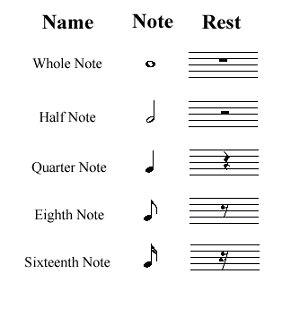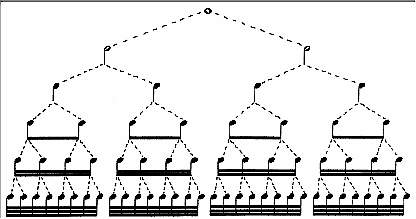How to read rhythms

Time Signatures
At the beginning of a piece of music there are two numbers that tell us how to divide the music. It provides a sense of time. The number on the top tells us how many beats to put in a bar and the number on the bottom tells us what sort of beats they are going to be. For example if there is a 4 on the bottom the beat is going to be quarter note beats, if the note on the bottom is a 2 they beat is going to be half notes.


The first note of the bar is always stressed to give a sense of time and division of the bar.
Simple Time
In simple time signatures the number at the top always represents the beat. This beat can be divided by 2. This is the pulse (or subdivision), the underlying movement in the beat.


Other simple time signatures will include 3/4. 2/4, 3/8, 4/2 etc
Compound Time
In compound time the number on the top tells us what the pulse is. For example in 6/8 the pulse is 6 eighth notes. We group these in 3 to form 2 beats. These beats will be dotted crochet beats.


Other compound time signatures will include 9/8 which will have 3 dotted quarter notes and 12/8 which has 4 dotted quarter notes etc.
Rhythms
When counting rhythms each note must be considered in relation to other notes. See the tree of notes.

Within the time signature and beat pattern it is possible to use any note value. It is important to note that the underlying beat and pulse remains. In the case of simple and compound time the groupings and subdivisions of the beat remain set and these must be felt internally by the performer. Examples of how to count the rhythms are as followed.

Note in this rhythm the lines that join two notes together. If these lines are joining two notes of the same pitch the values are added together to create the one sounding piece.

